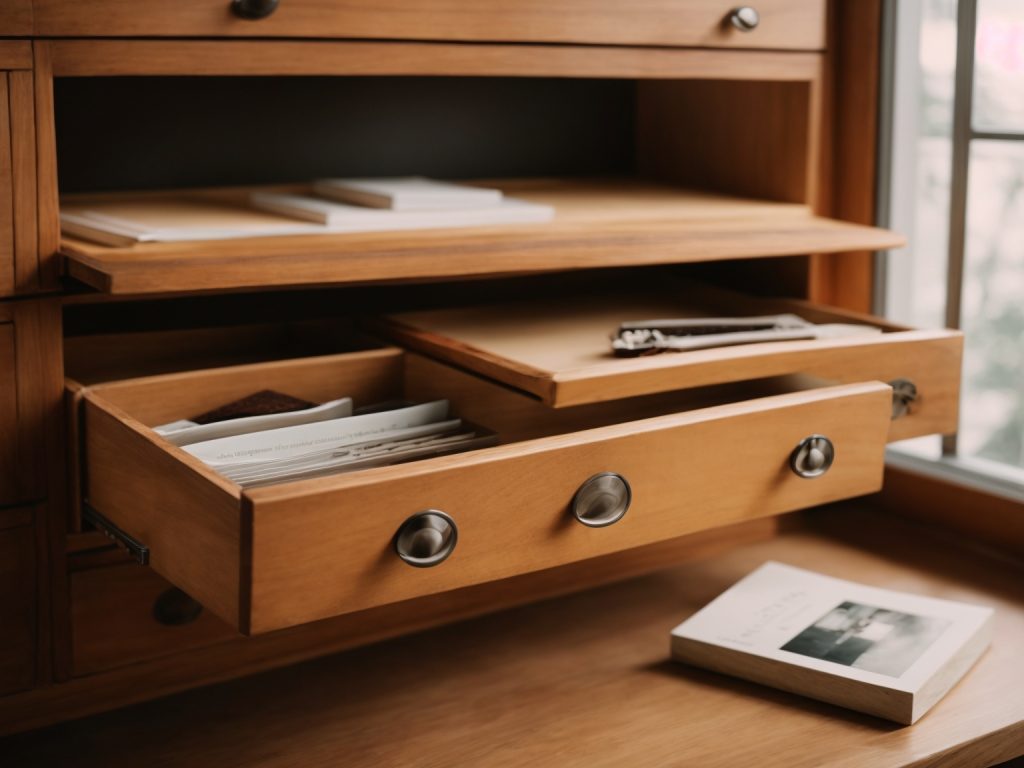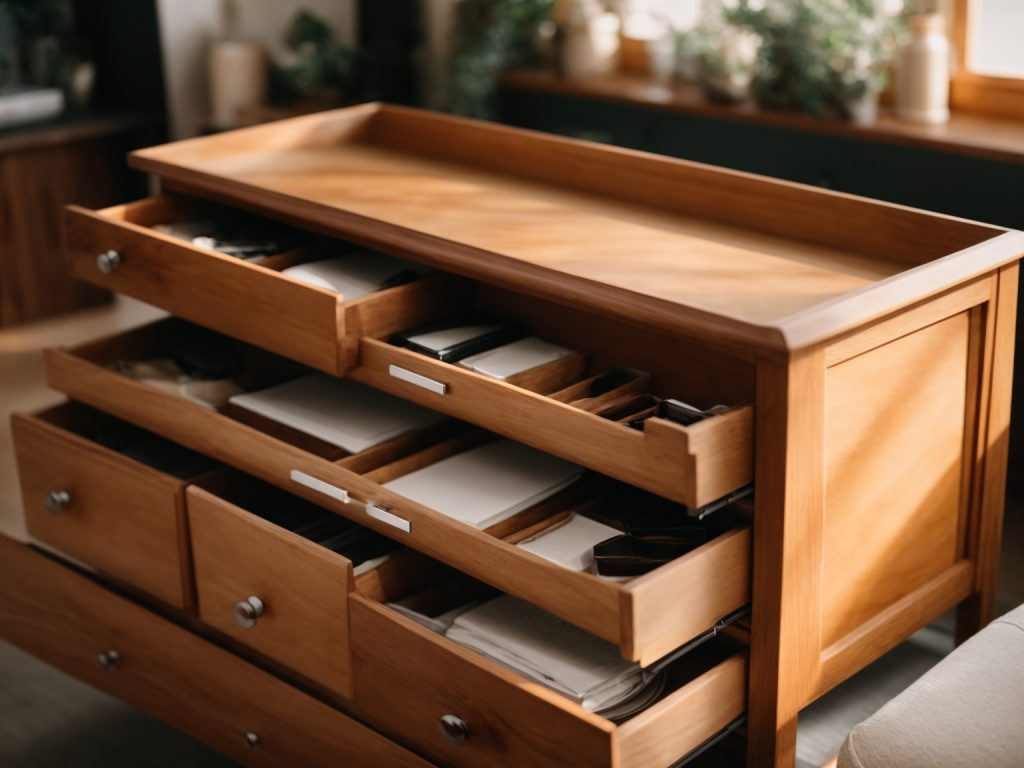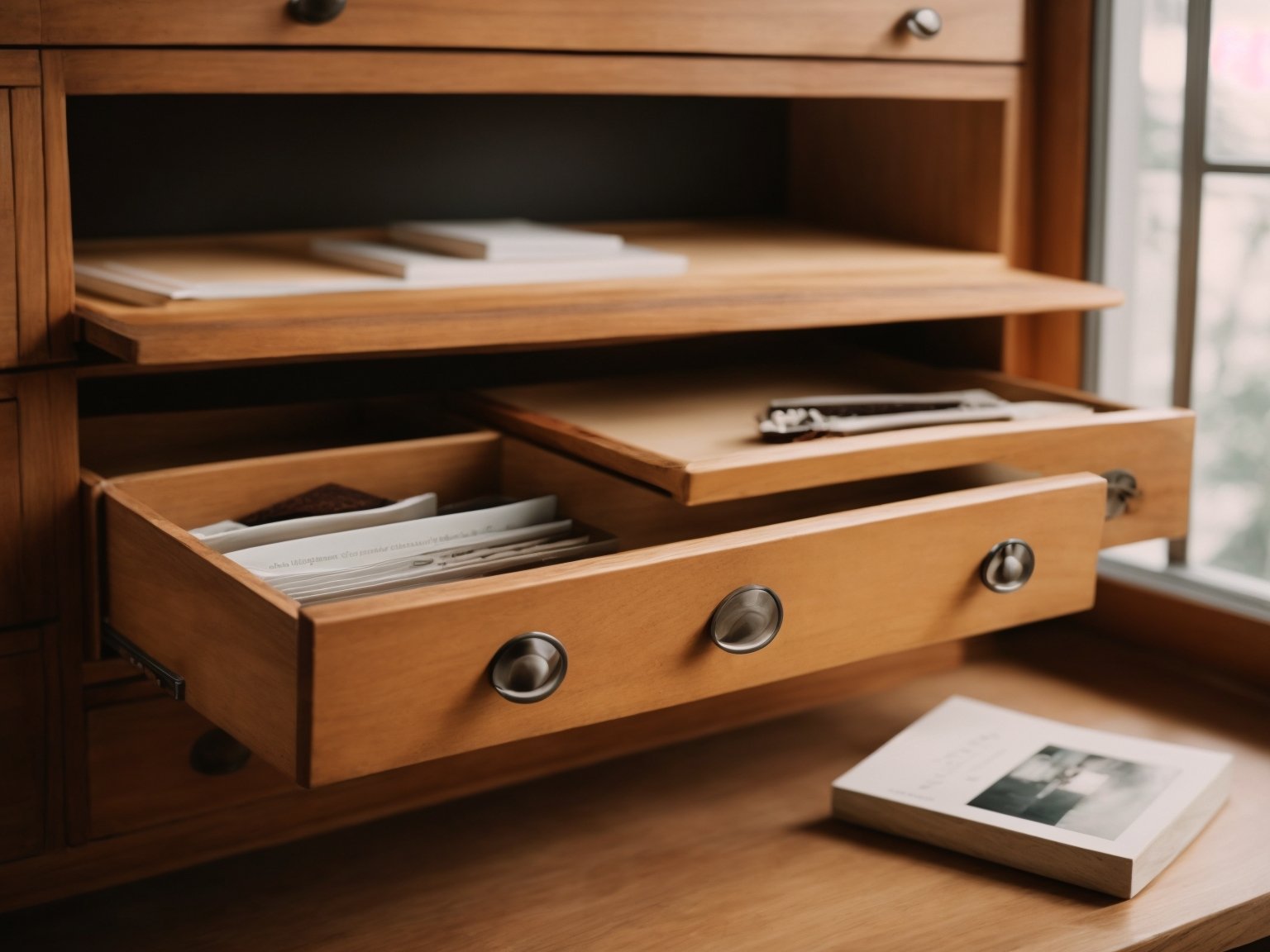Are you tired of struggling to open and close your wooden drawers? Sticky drawers can be frustrating and time-consuming, especially when you use them regularly. Fortunately, there are simple and affordable ways to make your wooden drawers slide more easily.
One common cause of sticky drawers is debris or material that has jammed the drawer and prevents it from sliding properly. Before attempting any fixes, check the guides for any paper or other material that may be causing the issue. If you find any debris, remove it carefully to avoid damaging the drawer or the guides.
Understanding the Problem

When your wooden drawers start to stick, it can be frustrating and time-consuming to open and close them. Fortunately, there are several ways to make wooden drawers slide more easily. Before you can fix the problem, it’s important to understand what’s causing it. Here are some things to consider:
Identifying Sticking Points
The first step in fixing sticking drawers is to identify where the problem is occurring. Is the drawer sticking when you try to open or close it? Is it rubbing against the sides of the cabinet or the other drawers? Is it getting caught on something inside the drawer itself? Once you know where the sticking point is, you can start to address the problem.
Assessing Drawer Material
Another important factor to consider is the material your drawers are made of. Different types of wood and finishes can affect how easily your drawers slide. For example, unfinished wood may be more prone to swelling and warping, which can cause drawers to stick. If your drawers are made of a softer wood, they may be more likely to wear down over time, causing the tracks to become misaligned.
By understanding the problem and assessing the material, you can start to take steps to make your wooden drawers slide more easily. From lubricating the tracks to sanding down the sides of the drawer, there are several simple fixes you can try to get your drawers working smoothly again.
Gathering Necessary Tools

Before you start fixing your wooden drawers, you need to gather some essential tools. Here are the tools you will need to make your wooden drawers slide easier:
Choosing the Right Sandpaper
To make your wooden drawers slide easier, you may need to sand the sides of the drawers. You will need to choose the right sandpaper to get the job done. Here are some things to consider when choosing sandpaper:
- Grit: The grit of sandpaper is determined by the number of abrasive particles per square inch. The higher the number, the finer the grit. For sanding wooden drawers, you will need medium/fine grit sandpaper.
- Type: There are different types of sandpaper, including aluminum oxide, silicon carbide, and garnet. For sanding wooden drawers, you will need aluminum oxide sandpaper.
- Backing: Sandpaper can be backed with paper or cloth. Paper-backed sandpaper is cheaper, but it wears out quickly. Cloth-backed sandpaper is more durable but more expensive.
Selecting a Suitable Wax
Wax can help lubricate the sides of your wooden drawers and make them slide easier. Here are some things to consider when selecting a suitable wax:
- Type: There are different types of wax, including beeswax, paraffin wax, and carnauba wax. Beeswax is a popular choice for lubricating wooden drawers.
- Form: Wax comes in different forms, including paste, liquid, and spray. Paste wax is the most common form for lubricating wooden drawers.
- Application: You will need a cloth or brush to apply the wax to the sides of your wooden drawers. Make sure to apply the wax evenly and let it dry before testing the drawers.
By gathering the necessary tools, you can make your wooden drawers slide easier and improve the functionality of your furniture.
Preparation Process
Before you start making your wooden drawers slide easier, you need to prepare them properly. This section will guide you through the preparation process, which includes emptying the drawers and removing them from the cabinet.
Emptying the Drawers
The first step in preparing your wooden drawers for easier sliding is to empty them. Remove all the items from the drawers and place them in a safe place. This will make it easier for you to work on the drawers without any obstructions.
Removing the Drawers
Once you have emptied the drawers, you need to remove them from the cabinet. Depending on the type of drawer you have, this may involve removing screws or pulling out the drawer from its runners. Refer to the manufacturer’s instructions or seek professional help if you are unsure how to remove the drawers safely.
Once you have removed the drawers, inspect them for any damage or wear and tear. If you notice any issues, such as loose joints or broken parts, you may need to repair or replace them before proceeding with the sliding process.
By properly preparing your wooden drawers, you can ensure that you have a smooth and hassle-free experience when making them slide easier.
Smoothening the Surfaces
If your wooden drawers are sticking or not sliding smoothly, one of the reasons could be rough surfaces. The edges of the drawers might be rough or uneven, causing friction and making it difficult for the drawers to slide in and out. Smoothening the surfaces of the drawers can help reduce friction and make them slide easier. Here are some tips on how to do it:
Sanding the Drawer Edges
The first step in smoothening the surfaces of your wooden drawers is to sand the edges. You can use sandpaper or a sanding block to sand the edges of the drawers. Start with a coarse grit sandpaper and then move to a finer grit. Sand the edges until they are smooth and even. Be careful not to sand too much, as this can damage the wood.
Cleaning After Sanding
After sanding the edges of the drawers, it’s important to clean them thoroughly. Use a soft cloth or a vacuum cleaner to remove any dust or debris from the drawers. You can also use a damp cloth to wipe down the drawers. Make sure the drawers are completely dry before moving on to the next step.
By smoothening the surfaces of your wooden drawers, you can reduce friction and make them slide easier. Sanding the edges and cleaning them afterwards is a simple and effective way to achieve this.
Applying the Solution
Once you have identified the cause of your wooden drawers sticking, it’s time to apply the solution. Here are the steps to follow:
Waxing the Drawer Edges
One way to make wooden drawers slide easier is by applying furniture wax to the edges of the drawers. This helps to reduce friction between the drawer and the frame. Here’s how to do it:
- Remove the drawers from the frame and clean them thoroughly with a dry cloth.
- Apply a thin layer of furniture wax to the edges of the drawers using a clean cloth. Be sure to cover the entire surface evenly.
- Let the wax dry for a few minutes, then buff it with a clean cloth to remove any excess.
Reinstalling the Drawers
Once you have waxed the edges of the drawers, it’s time to reinstall them. Here are the steps to follow:
- Clean the frame thoroughly with a dry cloth to remove any dust or debris.
- Slide the drawers back into the frame, making sure they are aligned properly.
- Test the drawers to ensure they slide smoothly. If they still stick, you may need to adjust the alignment or apply more wax.
By following these simple steps, you can make your wooden drawers slide easier and avoid the frustration of sticky drawers. Remember to clean and maintain your drawers regularly to keep them in good condition.
Maintenance Tips
To ensure your wooden drawers slide smoothly, it’s important to perform regular maintenance. Here are some tips to keep your drawers in good working order.
Regular Cleaning
Dirt and debris can accumulate in the tracks of your drawers, causing them to stick and slide less easily. To prevent this, make sure to clean out the tracks regularly. You can use a soft brush or cloth to remove any debris, and then wipe the tracks down with a damp cloth.
Periodic Waxing
Periodic waxing can help reduce friction and make your drawers slide more easily. To wax your drawers, you can use a paraffin wax or a specialized drawer wax. Apply the wax to the tracks and the sides of the drawers, and then use a soft cloth to buff it in. Be sure to follow the manufacturer’s instructions when using a specialized wax.
By following these maintenance tips, you can keep your wooden drawers sliding smoothly for years to come.
